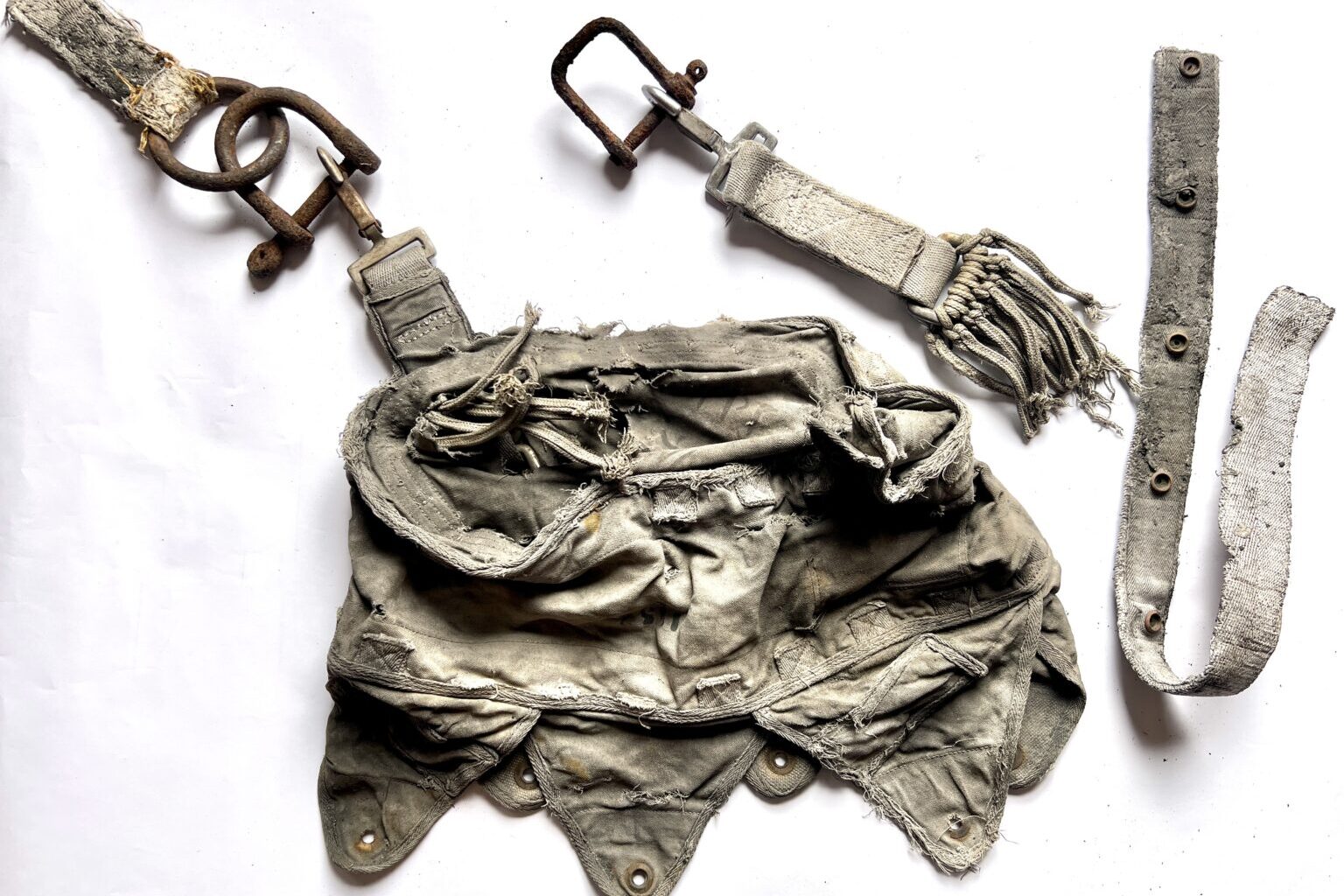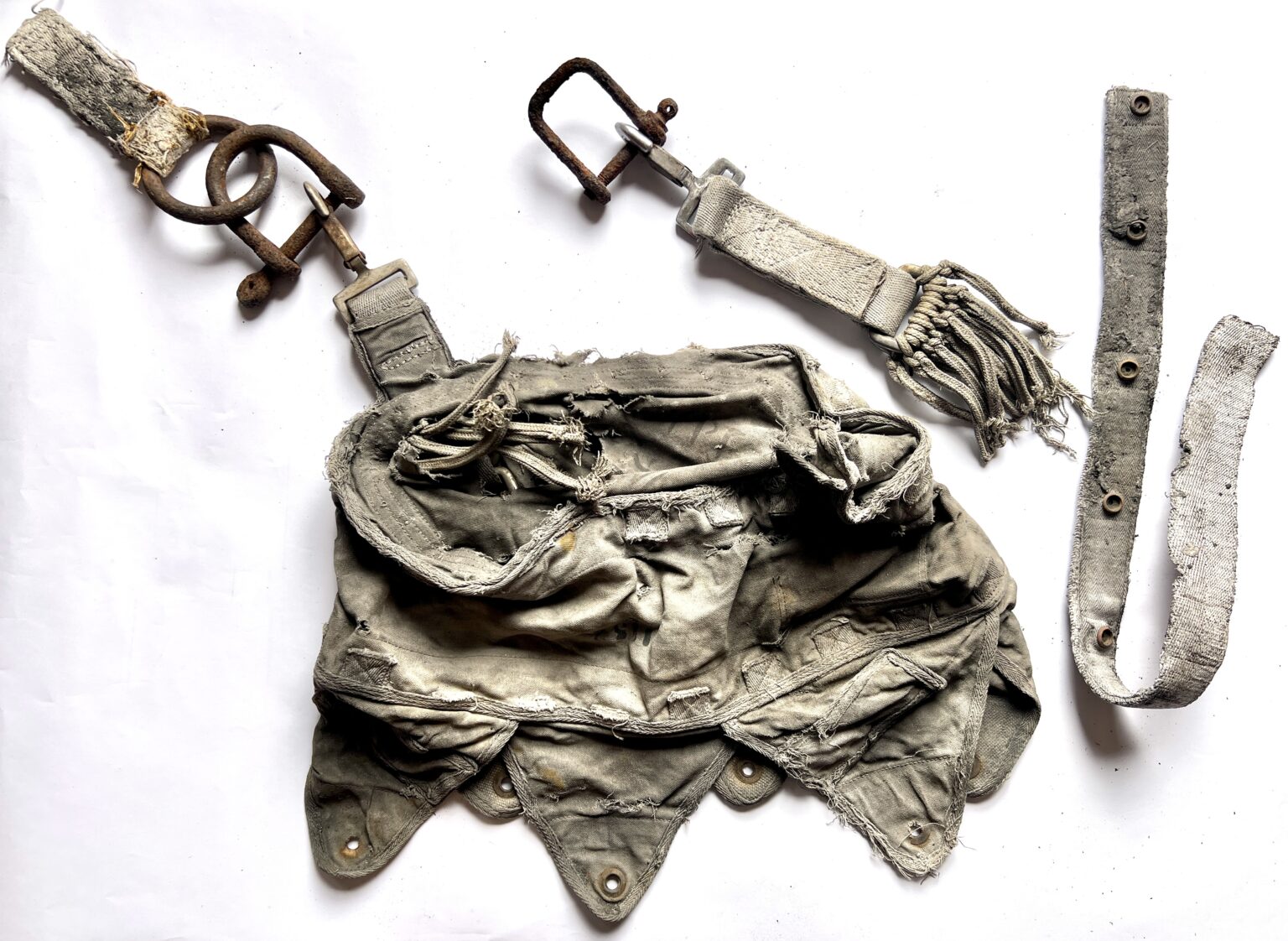
 Parachute pieces were found from World War II. | Image: Oetztaler Museen
Parachute pieces were found from World War II. | Image: Oetztaler Museen
Every summer the receding glacier will reveal some long kept secrets—be it planes, bodies, or even the famous Ötzi the Iceman. This summer, the Sulztalferner glacier in Austria’s Ötztal Alps gave up fragments of parachutes which are believed to be relics linked to one of the most daring intelligence missions of World War II.
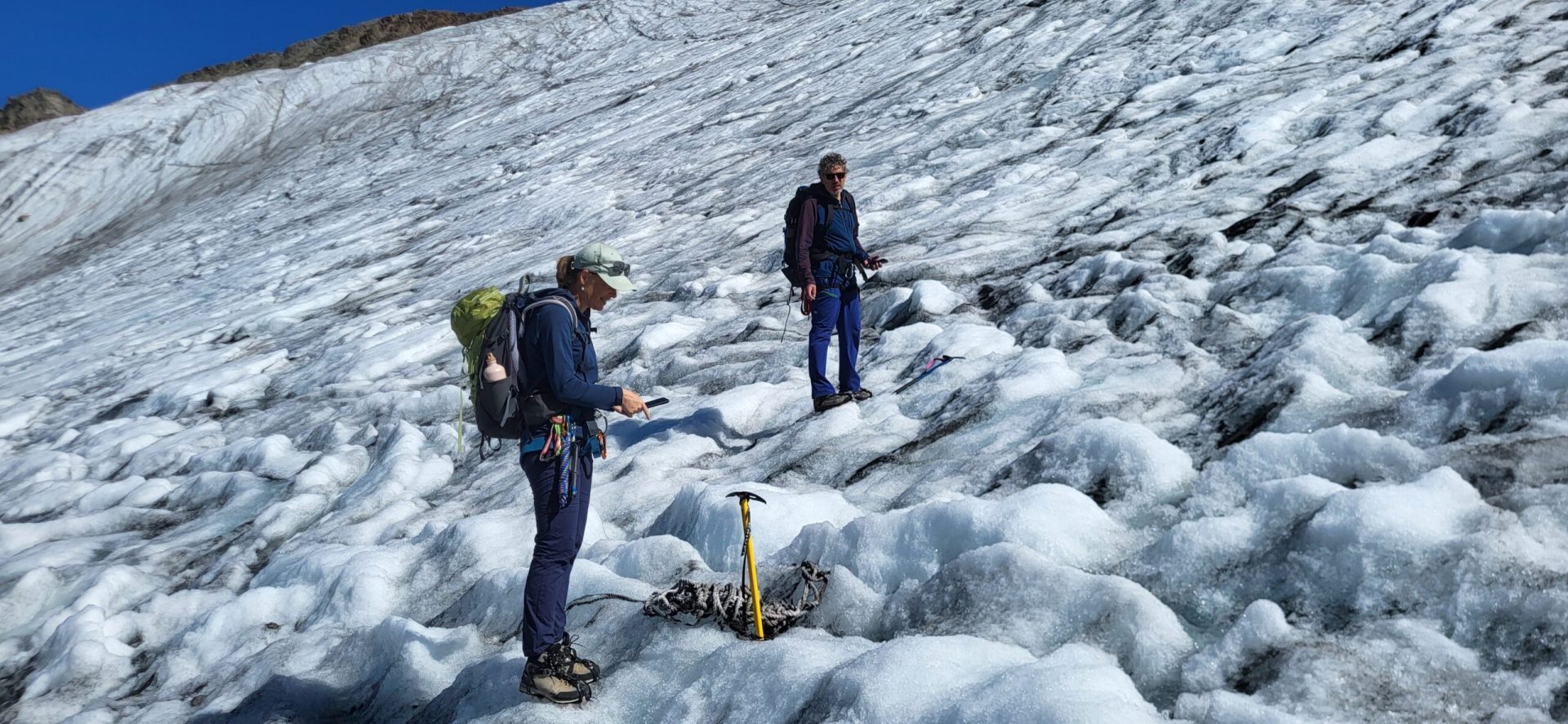
 The team from Oetztaler Museen searching the glacier for parachute pieces. | Image: Oetztaler Museen
The team from Oetztaler Museen searching the glacier for parachute pieces. | Image: Oetztaler Museen
80 years ago, the brave actions of three refugee agents of the U.S. Army’s Office of Strategic Services (OSS) ensured the blood-less surrender of Innsbruck. Dutch refugee Hans Wijnberg, German-born Jew Fred Mayer, and Austrian Wehrmacht deserter Franz Weber parachuted onto the Austrian glacier in February 1945, dressed in German snow capes over their American uniforms. They buried their equipment in the snow of the glacier and went to Innsbruck. Their task, part of “Operation Greenup,” was to gather intelligence on Nazi positions and ensure the peaceful handover of Tyrol to Allied forces.
Eight decades later, remnants of that famous parachute landing have resurfaced. This summmer, hut operators at the Amberger Hütte noticed scraps of fabric scattered across the glacier and alerted the Ötztal Museums. Archivist Annine Seebacher, now leading the preservation effort, confirmed that the materials are in poor condition after 80 years in the ice but are almost certainly from the agents’ parachutes. The relics are being dried, cleaned, and stabilized for display.
The story of the mission was mentioned in the New York Times following the end of the war “Torture Endured by Brooklynite Made Innsbruck Entry Bloodless; Corp. Frederic A. Mayer Directed Sabotage and Then, When Captured, Refused to Talk–City Later Declared Open Gets Command of Germans Water Poured Into Nostrils” and was extensively documented in the 2019 book “Codename Brooklyn” by historian Peter Pirker. According to the historian, the three brave spies landed with little sense of their precise location on the glacier where they buried their parachutes in deep snow before breaking into the nearby Amberger Hütte to shelter for two days. From there, they made their way to Weber’s home village of Oberperfuss, a suburb of Innsbruck, where they established their headquarters. Wynberg set up an underground newspaper, while Mayer recruited others for the resistance and conducted sabotage. The team would transmit intelligence to the Americans, including Nazi troop movements and rail traffic across the Brenner Pass. Mayer was captured and tortured but never betrayed his two co-conspirators. In the end, their intelligence helped ensure the peaceful and bloodless surrender of Innsbruck to U.S. forces in May 1945.
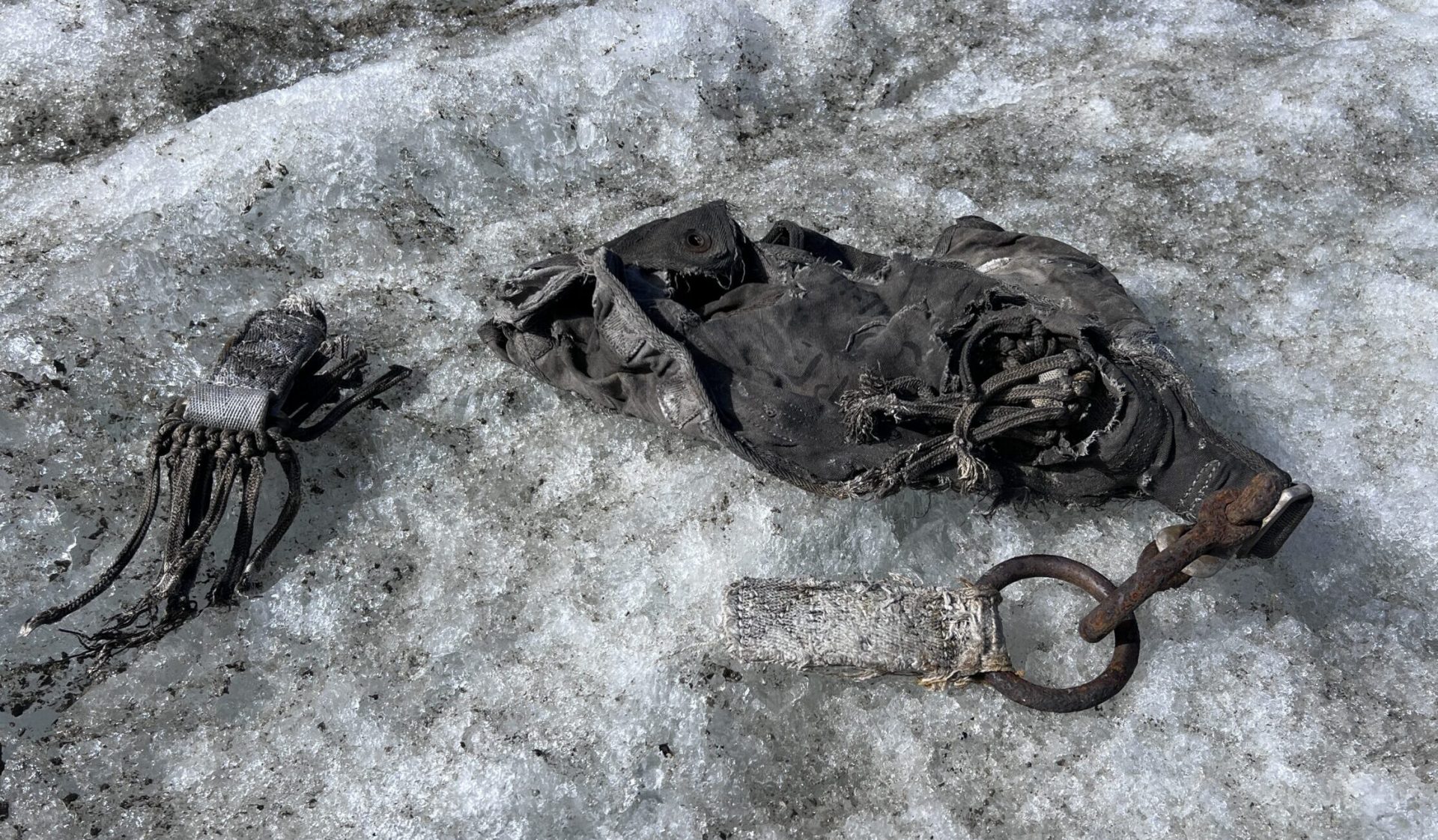
 The parachute pieces had been buried for 80 years. | Image: Oetztaler Museen
The parachute pieces had been buried for 80 years. | Image: Oetztaler Museen
The find coincides perfectly with a current exhibition commemorating the 80th anniversary of the end of World War II. The Ötztal Museums plan to feature the artifacts in an upcoming exhibition, WHO RESISTANCE? Deserters of the Wehrmacht and those who helped them, opening at the Tower Museum in Oetz. Pirker, who co-curated the show, will give a lecture on Operation Greenup on February 26, 2026—the anniversary of the parachute drop.
While glacier finds are not new, this most recent discovery is certainly a fascinating, tangible reminder of the bravery of many foreign exiles who returned to Europe from their new home in America to fight the Nazis. Operation Greenup was just one of many smaller operations conducted by European refugees. During World War II, approximately 2,000 refugees trained at Camp Ritchie in Maryland to help bring an end to the Nazi regime and the war. The work of these brave spies, known as ‘The Ritchie Boys,’ was invaluable for the U.S. forces and helped bring an end to World War II.
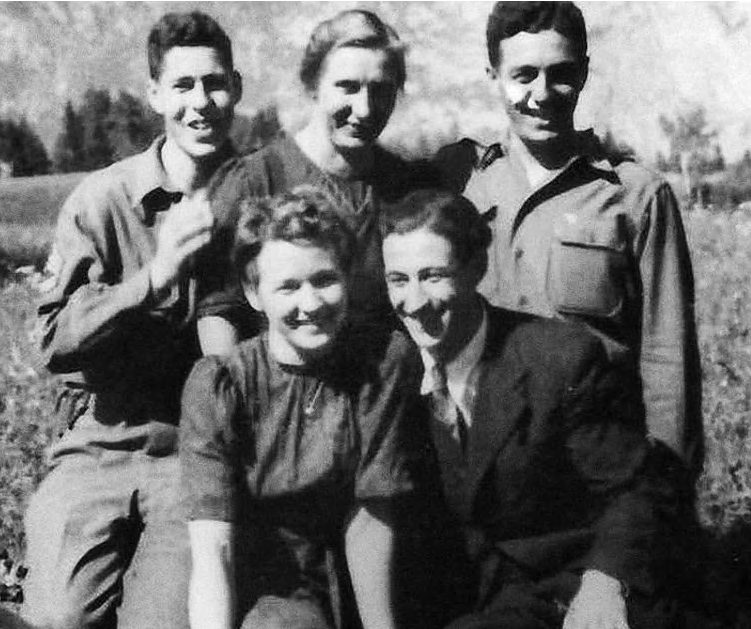
 The three U.S. refugee spies and two local helpers (left to right, back to front): Hans Wijnberg (OSS), Maria Hörtnagl, Fred Mayer, Anna Niederkircher, and Franz Weber days after the liberation of Innsbruck by the U.S. forces. | Image: Peter Pirker
The three U.S. refugee spies and two local helpers (left to right, back to front): Hans Wijnberg (OSS), Maria Hörtnagl, Fred Mayer, Anna Niederkircher, and Franz Weber days after the liberation of Innsbruck by the U.S. forces. | Image: Peter Pirker
